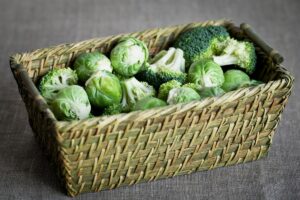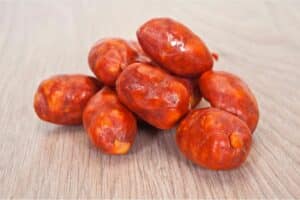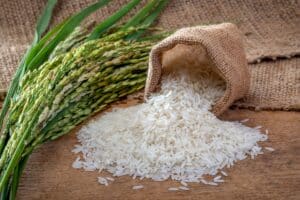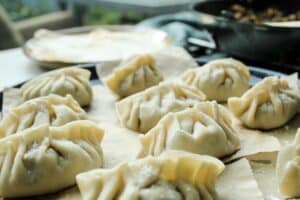During fall and winter, cinnamon seems to be present everywhere – there is no escape from this warm, sweet spice!
But did you know there are two varieties of cinnamon? The first one is Ceylon, also referred to as “real cinnamon.” The other is Cassia, also referred to as “bastard cinnamon.”
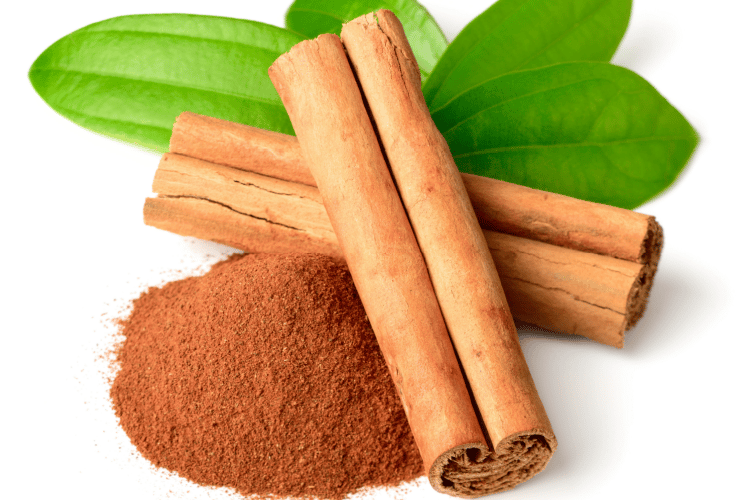
Cassia comes in three sub-varieties based on how much coumarin they contain. For reference, the naturally occurring sweet-smelling compound that makes cinnamon so cherished is known as coumarin.
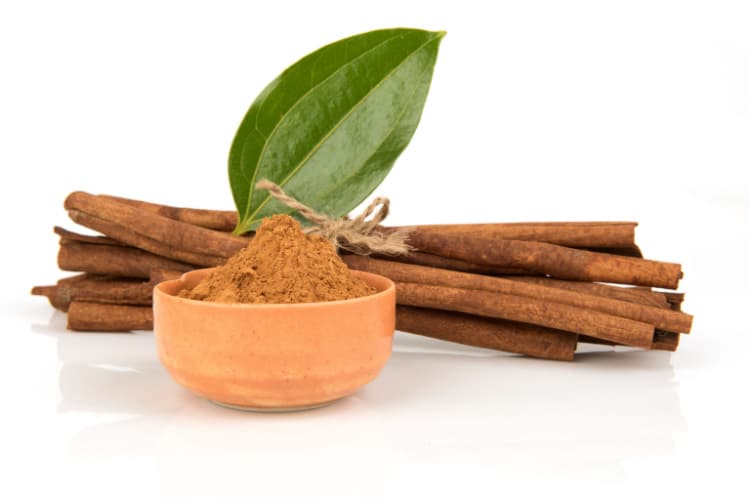
Anyhow, there is Chinese Cassia with 2% coumarin, Indonesian Cassia with 4%, and Vietnamese Cassia with 8% coumarin, which explains its spicy and sweet aroma.
Today we’ll discuss the difference between the true cinnamon, Ceylon, and the one with the most pungent aroma, Vietnamese Cassia cinnamon. Let’s begin.
Difference Between Ceylon and Vietnamese Cinnamon
The main difference between these two cinnamon varieties lies in their roots — Ceylon is derived from the Cinnamomum verum tree, whilst Vietnamese cinnamon is derived from the Cinnamomum loureiroi tree.
These cinnamon trees’ bark is what gives cinnamon its distinctive flavor and all of its variants. You may get it in either ground or the shape of coiled sticks known as quills.
In the United States, it’s permissible to refer to both Cassia and Ceylon as “cinnamon,” although in the United Kingdom and other nations, Cassia must be identified as such.
Since one is distinguished from the other by a legal norm, there is an unquestionable difference between the two spices. Let’s explore it in more detail.
Where Do They Come From?
Ceylon cinnamon comes from a southern Indian island formerly known as Ceylon, but you might know it today as Sri Lanka.
Unlike many other herbs and spices, Ceylon does not grow outside Sri Lanka. Actually, only a few selected locations in Sri Lanka, including Galle, Matara, Gampaha, Ratnapura, and Kalutara, can cultivate this incredibly selective cinnamon crop.
Vietnamese Cassia cinnamon, on the other hand, is your friendly neighborhood cinnamon! Although some people think Cassia originated in India, documents from 2800 B.C. demonstrate that China was already using Cassia cinnamon. The main Cassia-growing regions nowadays are Vietnam, Indonesia, China, and Burna.
Fun fact: Sri Lankan farmers also grow Cassia! But stingy old Ceylon is still primarily grown in Sri Lanka, which contains about 80 to 90% of the Ceylon cinnamon crops.
How Do They Differ Visually?
Ceylon cinnamon has a light brown color and a soft texture, making it very simple to handle and grind. The quills are paper thin and have many layers when rolling the bark. Compared to Vietnamese Cassia, these quills are quite fragile and easy to break.
Vietnamese Cassia is a dark brown, slightly reddish color. Its quilts only have a few layers when rolled up, which is why it has a coarser feel than Ceylon. Cassia’s quills are very tough, making it much harder to break and ground down into powdered cinnamon.
What Taste Differences Are There?
Ceylon is often described as having a mellow flavor. It has a sweeter, more complex taste, often with citrus notes. Since you probably had cinnamon at one time or another, chances are you’ve only had Cassia and never really tried Ceylon due to how rare it is to find!
Since Vietnamese Cassia is readily available in supermarkets, all of your cinnamon experiences have probably been of the Cassia variety! Vietnamese Cassia cinnamon possesses a spicier taste than true Ceylon cinnamon. This is because 95% of the oils in Vietnamese Cassia are made from cinnamaldehyde, which gives it a stronger and spicier flavor.
All in all, there is no apparent winner here regarding taste. Unless you buy low-quality cinnamon, which is hard to tell, they both taste great. To know how to choose high-quality cinnamon, you only need to watch out for the bark. Look for bark with a lighter color since this typically indicates higher quality and originates from the trunk rather than the branches of the cinnamon tree.
How Do They Differ Chemically?
The big difference between the two types of cinnamon that we’ve touched upon in the intro is in the chemical known as coumarin. This is a chemical defense mechanism found in plants to fend off pests and predators. On the plus side, it’s an anti-inflammatory, anti-hyperglycemic, anti-bacterial, and anti-adipogenic substance.
Vietnamese Cassia cinnamon contains 8% of coumarin, whereas Ceylon only has negligible amounts of it, around 0.2%. While it’s great to have it in some ways, don’t overuse it, as coumarin is toxic in high doses! So in terms of chemical composition, Ceylon is the better and safer option.
Which One Is More Expensive?
Ceylon is far more expensive than Vietnamese Cassia cinnamon. It’s produced in only one area of the world. The farmers wait four years for it to be ready for harvest and spend hours of careful labor to produce it.
Let’s talk about how it’s made. Peelers must manually remove the inner bark from each branch of the Ceylon tree. Then, the bark must be made incredibly thin to yield the most value.
Once the bark has been peeled off, the pieces need to dry and curl up in the sun. They are then layered into a straight piece of bark to create a quill that is around 42” long and needs to dry for another three to four days. Once done, they are bundled into bales and sent to facilities to be formally assessed and valued.
All in all, even highly competent employees can only produce a small number of quills every day. That’s why the price of the quills will increase as they become thinner and may go as much as $27 per pound.
Cassia, on the other hand, takes less time and effort to manufacture. The bark of the Cassia tree is tough, and the quills are formed by curling a single piece of bark without any filler. In contrast, Ceylon cinnamon is delicate and with richer insides, plus, its inner layers keep the quill from shattering.
What’s more, the average levels of coumarin, an organic substance that can harm the liver if ingested in excessive quantities, are also greater in Cassia. Because of this, Ceylon cinnamon is ultimately the healthier and more expensive choice, whereas Cassia is the more budget-friendly, yet not as healthy option.
Ceylon vs. Vietnamese Cinnamon Comparison Table
| Category | Ceylon | Vietnamese Cinnamon |
| Type of tree | Cinnamomum verum | Cinnamomum loureiroi |
| Also known as | Real cinnamon | Bastard cinnamon |
| Coumarin | 0.2% | 8% |
| Place of origin | Sri Lanka | Vietnam |
| Color | Light-brown | Dark brown, slightly reddish |
| Texture | Very soft | Quite hard and coarse |
| Easy to break | Fragile | Hard |
| Quills | Layered and delicate quills with richer insides | A single piece of bark quill without any filler |
| Flavor | Mellow-sweet taste, often with notes of citrus | Spicy overtones |
| Price | More expensive | Less expensive |
Nutritional Content Breakdown: Which One Is Healthier?
The nutritional table below shows that both Ceylon and Vietnamese cinnamon have comparable qualities, with Ceylon cinnamon having slightly more calories.
Cassia, however, can be dangerous due to the high amount of coumarin. Therefore, Ceylon cinnamon is of higher grade and significantly safer.
Overconsumption of coumarin may have the following negative effects:
The recommended daily dose of coumarin is 0.05mg per pound (0.1mg per kilogram) of body weight, whereas cinnamon, in general, is no more than 1 tsp. That said, it’s absolutely safe to sprinkle your favorite winter spice over your morning coffee, savory meat dishes, or baked goods.
Ceylon vs. Vietnamese Cinnamon: Nutritional Profile
| Category (1 tsp) | Ceylon | Vietnamese Cinnamon |
| Calories | 6.4 | 6 |
| Carbs | 2.1g | 2.1 |
| Fat | 0g | 0g |
| Potassium | 11mg | 11.2mg |
| Sodium | 0.3mg | 0.3mg |
| Protein | 0.1g | 0.1g |
| Fiber | 1.4g | 1.4g |
| Sugars | 0.1g | 0.1g |
| Vitamins & Minerals | ||
| Calcium | 2% | 2% |
| Iron | 0.2% | 0.2mg |
Can I Substitute Ceylon for Vietnamese Cinnamon & Vice Versa?
Yes, you may swap out Vietnamese cinnamon for Ceylon cinnamon and vice versa. You should keep in mind that Vietnamese cinnamon is spicier and has a bigger kick in terms of scent and flavor than Ceylon cinnamon, which has a more subdued flavor.
In most cases, the alteration won’t affect the recipe’s flavor, but it might not provide that authentic cinnamon flavor you want.
What you can do is alter the ratios to include a pinch more of Ceylon cinnamon in place of Vietnamese cinnamon and vice versa — including less Vietnamese cinnamon if substituting for Ceylon.
If you can’t find Ceylon or Vietnamese cinnamon, there are other similar alternatives you can try, like mace or nutmeg, allspice, fresh or ground ginger, cloves, or garam masala.
Conclusion
This sums up our spicy discussion on cinnamon types!
Overall, the scientific term for Ceylon is Cinnamomum verum, which literally translates to “true cinnamon” and was frequently used as such throughout history. However, even though Ceylon is more costly than Cassia, ultimately, it all comes down to preference.
Certain individuals simply adore the punch and spicy overtones of the good old Vietnamese Cassia cinnamon, even though the rarer and more sophisticated Ceylon cinnamon does offer some advantages, like better texture and sweeter, citrusy taste notes.
At the end of the day, it’s cinnamon, and it’s great. So whichever one you choose, you can’t lose.


